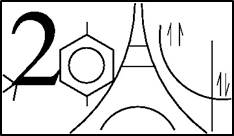Catalytic systems are complex and most often involve supported metal nanoparticles mostly on oxides and sulphides but also on other materials such as transition metal carbides.[1] In the case of very large particles, extended surfaces provide adequate models and this approach has been broadly used to unravel molecular mechanisms and to establish appropriate descriptors. However, for small particles in the subnanometer range the effect of the support may be very important and completely change the chemistry. Therefore, theoretical models need to include both, particle and support which implies demanding but still feasible computations. Nevertheless, the choice of the model is not straightforward since many options are possible regarding size and shape. The combined use of theory and experiment provides a useful guide to the design of appropriate and physically meaningful models. This will illustrated with two recent examples regarding the water gas shift reaction on Pt/CeO2 systems[2] and the CO2 hydrogenation to methanol on novel Cu/TiC and Au/TiC catalysts.[3],[4]
[1] J.A. Rodriguez and F. Illas, Phys. Chem. Chem. Phys., 14 (2012) 427-438
[2] A. Bruix, J. A. Rodriguez, P. J. Ramírez, S. D. Senanayake, J. Evans, J. B. Park, D. Stacchiola, P. Liu, J. Hrbek and F. Illas, J. Am. Chem. Soc., 134 (2012) 8968-8974
[3] A. B. Vidal, L. Feria, J. Evans, Y. Takahashi, P. Liu, K. Nakamura, F. Illas and J. A. Rodriguez,. J. Phys. Chem. Lett., 3 (2012) 2275-2280
[4] J. A. Rodriguez, J. Evans, L. Feria, A. B. Vidal, P. Liu, K. Nakamura, F. Illas, J. Catal. 307 (2013) 162-169

 PDF version
PDF version
